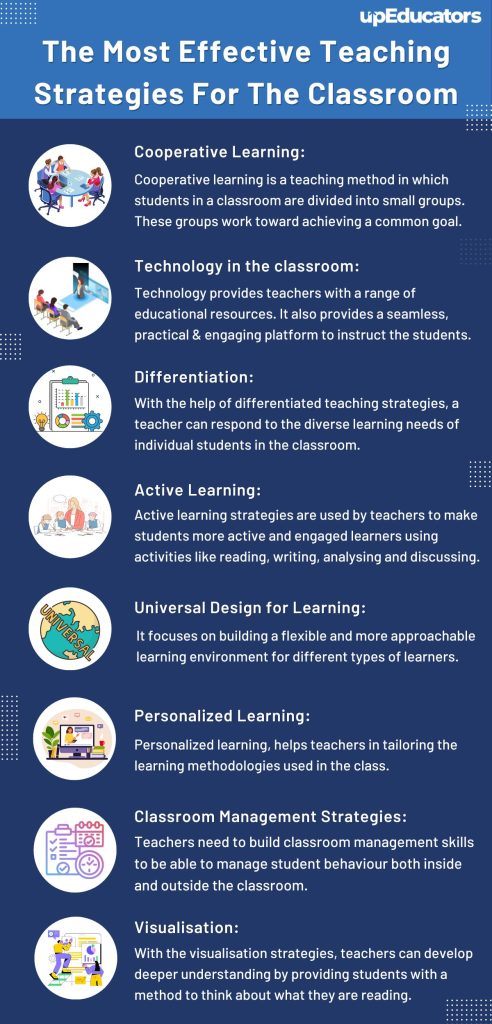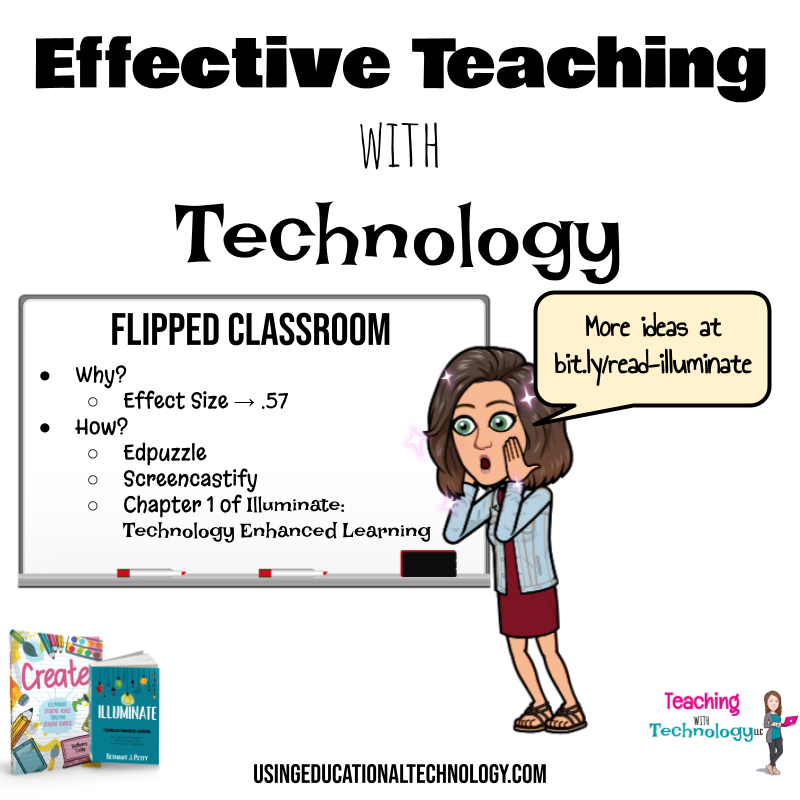You know your teaching strategies are effective when students show improved understanding and engagement. Regular assessments and feedback are key indicators.
Assessing the effectiveness of your teaching strategies is crucial for academic success. Effective teaching leads to better student performance and higher engagement levels. Frequent assessments, both formative and summative, provide clear insights into student understanding. Student feedback also plays an essential role in gauging the success of your methods.
Observing classroom dynamics and interaction can reveal how well students grasp the material. Adaptability in your approach ensures that you meet diverse learning needs. By continuously refining your strategies based on these indicators, you can foster a more productive and engaging learning environment.
Assessing Student Engagement
Effective teaching strategies keep students engaged. Assessing student engagement can show if your methods work. This section will focus on two key areas: class participation and active learning techniques.
Class Participation
Class participation is a clear indicator of student engagement. Track how often students contribute. Are they asking questions? Are they joining discussions?
| Participation Metric | What to Look For |
|---|---|
| Questions Asked | Frequency and relevance of questions |
| Discussion Involvement | Active contributions and willingness to share ideas |
| Group Work | Engagement in group activities and collaborative tasks |
Active Learning Techniques
Active learning techniques can boost engagement. These methods make students part of the learning process.
- Interactive Quizzes: Use tools like Kahoot or Quizlet to make quizzes fun.
- Peer Teaching: Let students teach each other. This method helps reinforce their knowledge.
- Hands-On Activities: Use experiments or projects that require active involvement.
These techniques can keep students interested and involved. They also help reinforce learning. Regularly assess these areas to ensure your teaching strategies are effective. Engaged students are more likely to succeed.
Evaluating Student Performance
Evaluating student performance is key to understanding the effectiveness of your teaching strategies. By closely monitoring student outcomes, you can identify areas of strength and areas needing improvement. This process involves analyzing student performance indicators, such as test scores and assignment quality.
Test Scores
Test scores provide a clear measure of student understanding. They help you gauge if students grasp the material taught. Regular quizzes and tests can highlight both individual and class-wide trends. Consider creating a table to track test scores over time:
| Test Date | Student Name | Score |
|---|---|---|
| 2024-08-15 | John Doe | 85 |
| 2024-08-15 | Jane Smith | 90 |
Assignment Quality
Assignment quality is another important indicator. High-quality assignments show deep understanding and critical thinking. Evaluate the content, structure, and creativity of student assignments.
- Content: Is the information accurate and relevant?
- Structure: Is the assignment well-organized and clear?
- Creativity: Does the student show original thinking?
Use a rubric to assess these aspects consistently. Provide detailed feedback to help students improve. Overall, by evaluating test scores and assignment quality, you can gain valuable insights. These insights will guide your teaching strategies and help your students succeed.
Gathering Student Feedback
Knowing if your teaching strategies are effective is crucial. One of the best ways is gathering student feedback. This helps you understand what works and what doesn’t. Let’s explore two methods: Surveys and Questionnaires and One-on-One Interviews.
Surveys And Questionnaires
Surveys and questionnaires are powerful tools. They allow you to gather structured feedback from many students. Use these tools to ask specific questions about your teaching methods. Here are some tips for creating effective surveys:
- Keep questions short and clear.
- Use a mix of open-ended and multiple-choice questions.
- Ensure anonymity to get honest answers.
Consider asking questions like:
| Question | Type |
|---|---|
| How clear are the instructions? | Multiple-Choice |
| What topics need more explanation? | Open-Ended |
One-on-one Interviews
One-on-one interviews offer in-depth insights. They allow for a deeper understanding of student experiences. These interviews can be formal or informal. Here are some tips for conducting effective interviews:
- Prepare a list of open-ended questions.
- Create a comfortable environment.
- Listen actively and take notes.
Sample questions include:
- What do you like about the class?
- What can be improved?
- How do you feel about group activities?
Interviews help you understand individual student needs. They provide a personal touch to feedback.
Observing Classroom Behavior
Understanding classroom behaviour is vital for effective teaching. By observing students, you can gauge the success of your strategies. This involves looking at body language and interaction patterns.
Body Language
Body language reveals much about student engagement. Watch for eye contact, as it shows attention. Notice if students sit upright or slump in their chairs. Upright posture often means interest. Fidgeting might indicate boredom or confusion.
Facial expressions are also key. Smiles and nods often mean understanding. Frowns or blank stares suggest confusion. By reading these signals, you can adjust your teaching methods.
Interaction Patterns
How students interact with each other also matters. Group work can show if they understand the material. Active participation suggests confidence and comprehension.
Observe the types of questions students ask. Are they probing deeper into the topic? This indicates curiosity and understanding. Silence or off-topic questions might suggest a lack of engagement. Here is a simple table to help you track these patterns:
| Interaction Type | Indication |
|---|---|
| Group Discussions | High engagement and understanding |
| Frequent Questions | Curiosity and interest |
| Silence | Possible confusion or boredom |
Utilizing Peer Reviews
Peer reviews can help you understand your teaching effectiveness. They provide valuable feedback from colleagues who share your experiences. These insights can help you refine your strategies and improve student outcomes.
Colleague Observations
Invite a trusted colleague to observe your class. They can offer an unbiased perspective on your teaching methods. This can highlight both strengths and areas for improvement. During the observation, they can note:
- Student engagement levels
- Clarity of instructions
- Effectiveness of teaching materials
After the session, discuss their observations. Take their feedback seriously. It can provide valuable insights that you might miss.
Team Teaching Insights
Team teaching is another way to gain peer feedback. By co-teaching with a colleague, you can observe each other’s methods in real-time. Some benefits of team teaching include:
| Benefit | Description |
|---|---|
| Shared Responsibility | Both teachers share the planning and delivery of lessons. |
| Immediate Feedback | You can receive immediate feedback from your colleague. |
| Enhanced Learning Experience | Students benefit from different teaching styles and perspectives. |

Credit: www.upeducators.com
Implementing Formative Assessments
Formative assessments are important in the classroom. They help teachers understand how well students are learning. By using these assessments, teachers can adjust their teaching methods. This way, students get the most out of their education. Let’s explore some effective formative assessment strategies.
Quizzes
Quizzes are a great way to assess student understanding. They can be short and frequent. This helps keep students engaged. Use different types of questions like:
- Multiple Choice
- True or False
- Short Answer
Quizzes provide instant feedback, helping students identify their strengths and areas for improvement. Teachers can use quiz data to adjust lesson plans, ensuring all students are on the same page.
In-class Activities
In-class activities make learning fun and interactive. They help students apply what they have learned. Some effective in-class activities include:
- Group Discussions
- Role-Playing
- Interactive Games
These activities promote active learning. They also encourage teamwork and communication. Teachers can observe and identify which students need extra help. This helps create a supportive learning environment.
| Activity | Purpose |
|---|---|
| Group Discussions | Enhance understanding through peer interaction |
| Role-Playing | Practice real-world scenarios |
| Interactive Games | Make learning enjoyable |
Analyzing Longitudinal Data
To determine the success of your teaching strategies, you need to analyze longitudinal data. This involves collecting and examining data over multiple years. By doing so, you can see if your strategies are improving student outcomes over time.
Year-over-year Comparisons
Year-over-year comparisons help you understand changes in student performance. You can compare test scores, grades, and other metrics from one year to the next. This helps to identify trends and make informed decisions. Below is a simple table showing student test scores over three years:
| Year | Average Test Score | Pass Rate |
|---|---|---|
| 2021 | 75% | 85% |
| 2022 | 78% | 88% |
| 2023 | 82% | 92% |
Trend Analysis
Trend analysis involves looking at data over several years to spot patterns. This can help you see if changes in teaching strategies are leading to consistent improvements. For instance, you might notice that a new strategy boosts scores every year.
- Identify the years with the biggest score improvements.
- Check if specific strategies correlate with better outcomes.
- Adjust your methods based on these trends.
Consider this example of trend analysis:
Year | Strategy Implemented | Average Test Score
2021 | Group Projects | 75%
2022 | Interactive Lessons | 78%
2023 | One-on-One Tutoring | 82%
This shows that one-on-one tutoring has the highest increase in scores.
Adapting To Diverse Learning Styles
Adapting to diverse learning styles is vital for effective teaching. Each student learns differently, so utilizing varied teaching strategies helps meet their unique needs. This section explores the use of visual and auditory tools and kinesthetic activities to enhance your teaching approach.
Visual And Auditory Tools
Visual learners thrive on images and diagrams. Use charts, graphs, and colourful slides to illustrate concepts. Create visual aids that simplify complex ideas. Infographics can break down information into digestible chunks.
Auditory learners benefit from listening. Incorporate podcasts, audio recordings, and discussions into your lessons. Play educational videos and encourage students to explain concepts out loud.
| Tool | Benefit |
|---|---|
| Charts | Clarifies data trends |
| Podcasts | Engages auditory learners |
| Infographics | Summarizes complex information |
Check Also: How Often Should RE Be Taught in Primary Schools?
Kinesthetic Activities
Kinesthetic learners need to move and touch. Hands-on activities help them understand better. Incorporate lab experiments, building models, and role-playing exercises.
Use movement-based games to reinforce concepts. Encourage students to write on the board or use manipulatives in math. These activities make learning interactive and fun.
- Lab experiments
- Building models
- Role-playing
- Movement-based games
By adapting to diverse learning styles, you ensure every student has the chance to succeed. This approach creates a dynamic and inclusive classroom environment.

Credit: usingeducationaltechnology.com
Frequently Asked Questions
How Do You Measure The Effectiveness Of Teaching Strategies?
Measure teaching effectiveness through student assessments, feedback surveys, classroom observations, and performance data. Evaluate engagement and learning outcomes.
How Do You Know That A Teaching Strategy Is Effective?
You know a teaching strategy is effective when students show improved understanding, engagement, and performance. Collect feedback, assess progress, and adjust methods. Consistent positive results indicate success.
How Do You Know When Your Teaching Is Effective?
Effective teaching is evident through student engagement, improved performance, positive feedback, and the ability to apply concepts. Assessments and observations also help gauge success.
How Do You Ensure Effective Teaching Strategies In The Classroom?
Utilize diverse teaching methods, engage students with interactive activities, provide clear instructions, give constructive feedback, and create a positive learning environment.
Check Also: How to Start a Career in Primary School Teaching
Conclusion
Measuring the effectiveness of your teaching strategies is crucial. Pay attention to student engagement and feedback. Regular assessments help gauge progress. Stay adaptable and open to new methods. Continuous improvement ensures successful learning outcomes. Implement these tips to enhance your teaching effectiveness and boost student success.










